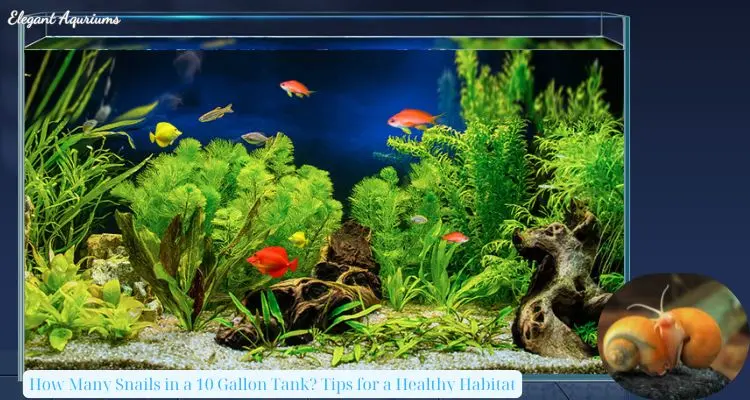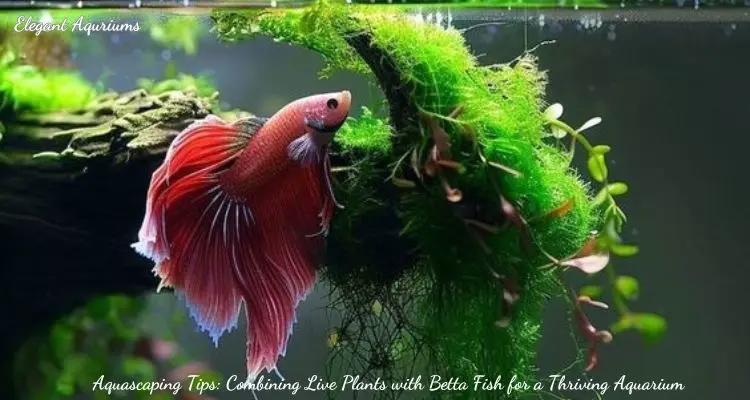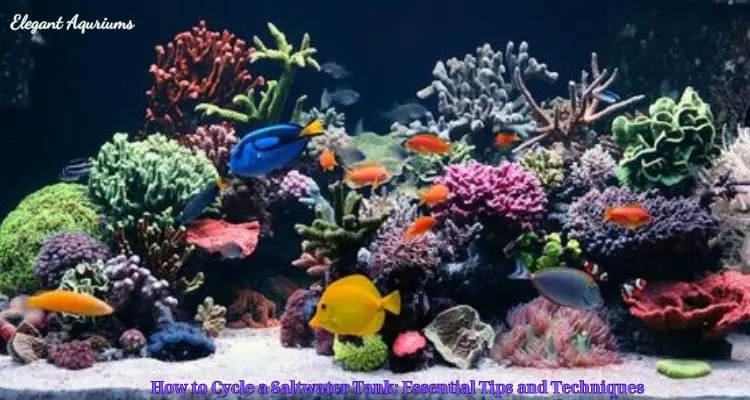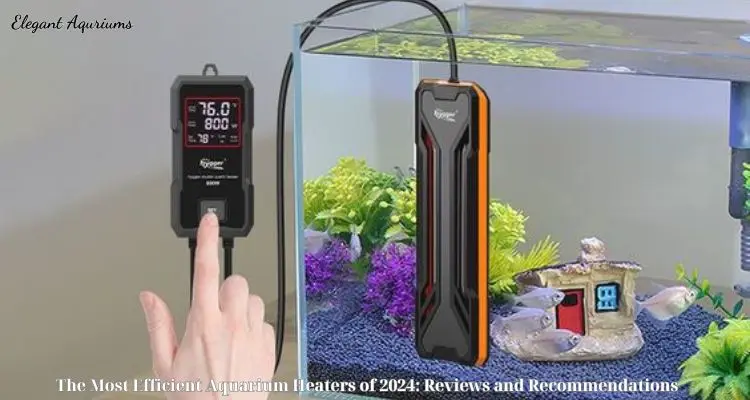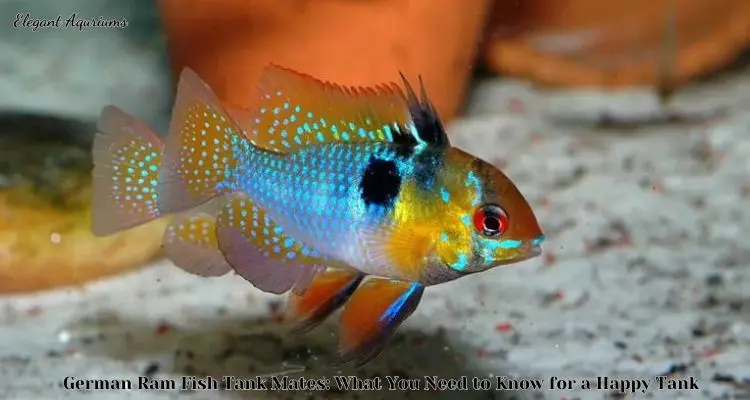Aquarium accessories and decorations
How Many Snails in a 10 Gallon Tank? Tips for a Healthy Habitat
How Many Snails in a 10 Gallon Tank? Choosing the right number is crucial for maintaining a balanced ecosystem. Snails play a vital role in cleaning the tank by consuming algae, leftover food, and decaying plant matter. However, too many snails can lead to overcrowding, excessive waste production, and competition for resources. In this comprehensive guide, Elegant Aquriums will explore how many snails in a 10 gallon tank you can safely keep, the factors to consider when determining the number, and tips for creating a healthy habitat for your aquatic snails.
Understanding the Role of Snails in an Aquarium
Before determining how many snails to keep in a 10-gallon tank, it’s essential to understand their role in the aquarium. Snails are often referred to as “tank cleaners” because they help maintain water quality by eating algae and decomposing organic matter. However, they also produce waste, which contributes to the tank’s bioload. The bioload is the amount of waste produced by all the organisms in the tank, including fish, invertebrates, and plants. Managing the bioload is crucial for keeping the water clean and the tank inhabitants healthy.
Factors to Consider When Determining the Number of Snails
The ideal number of snails in a 10-gallon tank depends on several factors, including the type of snail, the number of other tank inhabitants, and the tank’s overall setup. Below are the key factors to consider:
Type of Snail
Different snail species vary in size, behavior, and waste production. Common aquarium snails include Nerite snails, Mystery snails, Ramshorn snails, and Malaysian Trumpet snails. For example, Nerite snails are known for their algae-eating abilities and are relatively small, making them a popular choice for small tanks. In contrast, Mystery snails are larger and produce more waste, so fewer of them should be kept in a 10-gallon tank.
Tank Inhabitants
The number of snails you can keep also depends on the other inhabitants in the tank. If your tank is heavily stocked with fish or other invertebrates, you should limit the number of snails to avoid overloading the bioload. Conversely, if your tank has only a few fish, you may be able to keep more snails.
Aquarium Plants
Live plants can help absorb some of the waste produced by snails, which can allow you to keep a few more snails in the tank. However, some snail species may eat certain types of plants, so it’s essential to choose snail-friendly plants or monitor the snails’ behavior closely.
Filtration and Maintenance
A well-maintained aquarium with an efficient filtration system can support a higher number of snails. Regular water changes, substrate cleaning, and filter maintenance are necessary to keep the water quality high, especially in a small tank like a 10-gallon setup.
How Many Snails in a 10 Gallon Tank: Recommended Numbers

Based on the factors mentioned above, here is a general guideline for the number of snails you can keep in a 10-gallon tank:
Nerite Snails
3-5 Nerite snails are typically suitable for a 10-gallon tank. They are excellent algae eaters and do not reproduce in freshwater, so you won’t have to worry about population explosions.
Mystery Snails
1-2 Mystery snails are ideal for a 10-gallon tank due to their larger size and higher waste production. Mystery snails are peaceful and come in various colors, making them a popular choice for aquarists.
Ramshorn Snails
5-8 Ramshorn snails can be kept in a 10-gallon tank. These snails are smaller and can reproduce rapidly, so it’s essential to monitor their population closely.
Malaysian Trumpet Snails
5-10 Malaysian Trumpet snails are suitable for a 10-gallon tank. These snails are beneficial for stirring the substrate, preventing anaerobic pockets, but they can multiply quickly, so population control is necessary.
Assassin Snails
If you have a problem with pest snails, you can introduce 2-3 Assassin snails in a 10-gallon tank. Assassin snails prey on other snails, helping to control their population.
Creating a Healthy Habitat for Your Snails
Once you’ve determined how many snails to keep in your 10-gallon tank, it’s important to create a healthy and comfortable environment for them. Here are some tips for maintaining a thriving snail habitat:
Provide Ample Hiding Places
Snails enjoy hiding in shaded areas, so it’s essential to provide plenty of hiding spots. You can use rocks, driftwood, caves, or dense plantings to create sheltered areas where snails can retreat and feel secure.
Maintain Water Quality
Snails are sensitive to poor water conditions, so regular water changes and monitoring are crucial. Aim for weekly water changes of 20-30% and keep an eye on ammonia, nitrite, and nitrate levels. The ideal pH range for most snails is between 7.0 and 8.0.
Offer a Balanced Diet
While snails will naturally consume algae and leftover fish food, it’s important to supplement their diet with additional nutrients. You can provide blanched vegetables like zucchini, spinach, or cucumber, as well as commercial snail pellets or wafers. Be sure to remove any uneaten food to prevent water contamination.
Control Snail Population
Some snail species, such as Ramshorn and Malaysian Trumpet snails, can reproduce rapidly, leading to overpopulation. To control their numbers, you can manually remove excess snails, introduce Assassin snails, or limit the amount of food available.
Monitor Calcium Levels
Snails need calcium to maintain strong, healthy shells. If your tap water is low in calcium, consider supplementing with calcium-rich foods, such as cuttlebone or calcium powder, or using a liquid calcium supplement.
Prevent Accidental Snail Introductions
If you’re adding new plants to your tank, be sure to inspect them carefully for hitchhiking snails or snail eggs. Quarantine new plants or give them a dip in a mild bleach solution to remove any unwanted pests before adding them to your tank.
Choose Snail-Friendly Tank Mates
When selecting fish or other tank inhabitants, opt for species that are peaceful and won’t harass or prey on your snails. Avoid aggressive fish like cichlids, puffers, or loaches that may see snails as a food source.
Common Challenges and Troubleshooting
Even with careful planning, you may encounter some challenges when keeping snails in your 10-gallon tank. Here are some common issues and how to address them:
- Overpopulation: If your snail population is growing too quickly, consider reducing the number of snails or introducing a predator like the Assassin snail. Additionally, reduce the amount of food available in the tank to limit reproduction.
- Shell Erosion: If you notice your snails’ shells becoming thin or eroded, it may be due to a lack of calcium in the water. Supplement their diet with calcium-rich foods or add a calcium supplement to the tank.
- Algae Overgrowth: While snails help control algae, they may not be able to keep up with excessive growth. Ensure your tank is not receiving too much light, and consider adding more algae-eating snails or fish to help manage the algae.
- Unexplained Deaths: If your snails are dying unexpectedly, check the water parameters for issues like high ammonia or nitrite levels, low pH, or copper contamination. Copper is toxic to snails, so avoid using medications or water conditioners that contain copper.
Conclusion
Determining how many snails to keep in a 10-gallon tank is essential for maintaining a balanced and healthy aquatic environment. By considering the type of snail, the number of other tank inhabitants, and the overall setup of your aquarium, you can create a thriving habitat for your snails. Remember to provide ample hiding places, maintain water quality, offer a balanced diet, and monitor the snail population to ensure their well-being.
With proper care and attention, your snails will thrive, helping to keep your 10-gallon tank clean and beautiful. Whether you’re a beginner or an experienced aquarist, snails can be a delightful and beneficial addition to your aquarium, offering both aesthetic appeal and practical benefits. Enjoy the process of creating a harmonious and healthy aquatic environment for your snails and other tank inhabitants.

